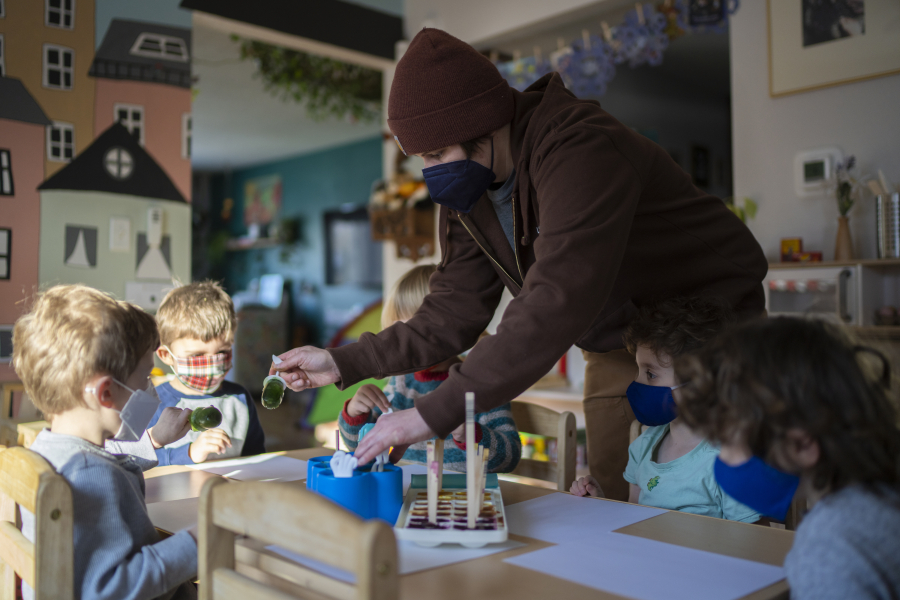Parents are tired.
Take nursing assistant Tammi Lewis, who missed weeks of work and $7,800 in wages when her toddler’s child-care classroom in Plymouth, Minnesota suffered COVID outbreaks.
Or Kelsey and Christian Dahlager of St. Paul, Minnesota, who pay $3,000 a month for child care for their two children — a sum greater than community college tuition and $300 more than a parent making minimum wage would take home in a month — yet still find themselves some days juggling working from home with watching an infant and toddler because caregivers are sick.
Parents across the country have spent two years plowing through the rubble of an already patchwork child-care system that was further compromised by the pandemic, shutdowns and historic unpredictability. Many thought they would be able to carve out a new normal in the new year, but the omicron variant has added another round of uncertainty.
The plight of low-wage and front-line parents who don’t have the option of working remotely is the most severe. But even high-wage earners blessed with paid vacation and sick days said they too struggle with the high cost and declining number of slots for Minnesota’s 354,000 children 5 and younger in need of full-time care.



